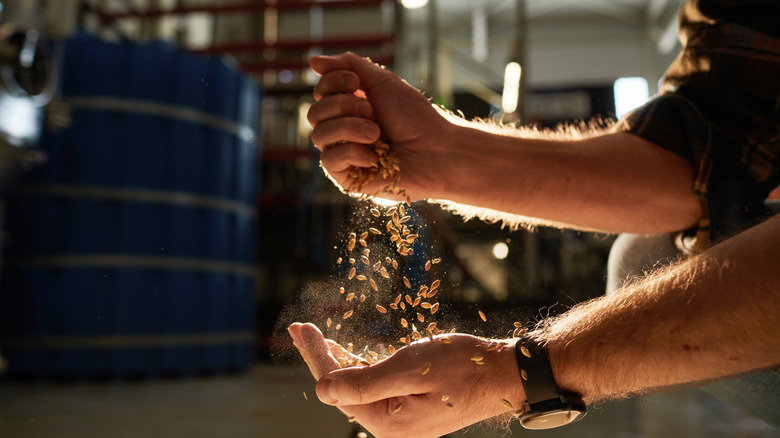The Real Difference Between The Types Of Barley Used For Beer
The fourth largest crop grown worldwide, barley can survive in all sorts of environments, thankfully, as it is an essential ingredient used to make beer (via BlackTailNYC). Other cereal grains like wheat, rice, corn, oats, and rye can also be used in the brewing process. Still, barley and wheat must be malted before they are used, which basically means soaking the grains in water until natural sugars are metabolized so that yeast has something to eat during the fermentation stage (per Tapville Social). This whole malting process impacts how your beer will taste, insists Beer Brewing, ultimately affecting the color, flavor, body, and smell of the brew you hold in your hand.
The barley brewers choose to use in the malting process will influence both fermentation and processing, according to Brewer World, making some barley types better suited for ales, while others are best reserved for lagers and malts. Read on to learn what impacts a brewer's decisions on brew day.
Two and six-row grains
American Scientist likens barley plants to a toolbox of enzymes, with a spike at the top part of the grain that can hold seeds in rows of two. European beers are typically made from two-row barley grains, resulting in a maltier flavored beer with a better starch-to-husk ratio, whereas American brews more often use the six-row variety that has a higher enzyme content, more protein, and less starch (via Beer Brewing).
On France's southeastern coast, six-row barley was malted as early as 1400BC for beer (per Serious Eats). Home Brewers Association lists additional reasons why brewers may prefer one barley type over another. Two-row kernels are plumper, have a greater tolerance to weather fluctuations, are easier to grind in mills, and lend a more mellow flavor to brews. While six-row grains are cheaper but must be separated into different groups since different kernel sizes will absorb water at different rates, and higher protein and enzyme levels may speed up the conversion of fermentable sugars. For those brewing at home, different barley types can give you extra variables to play around with as you batch your next brew.

